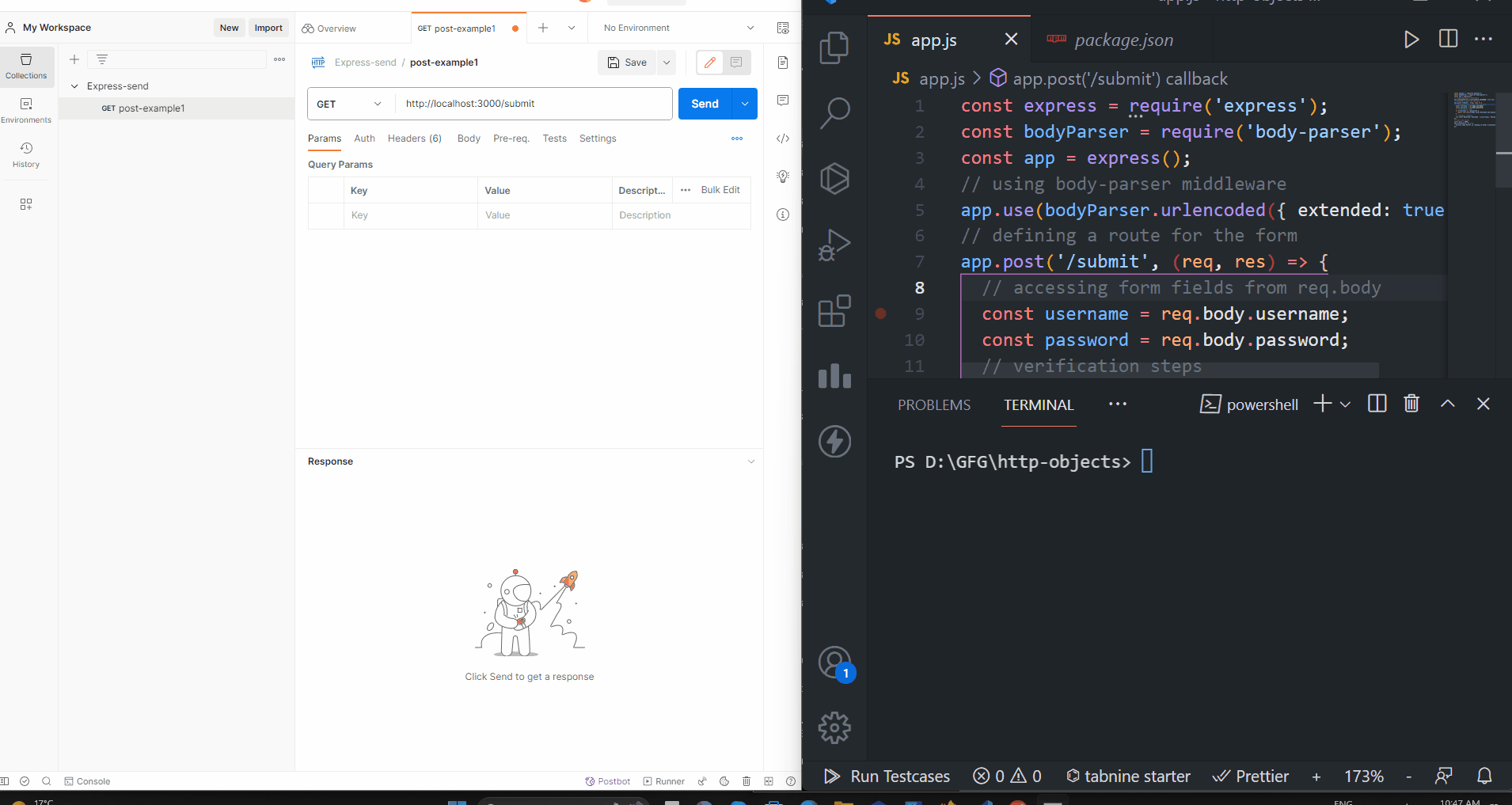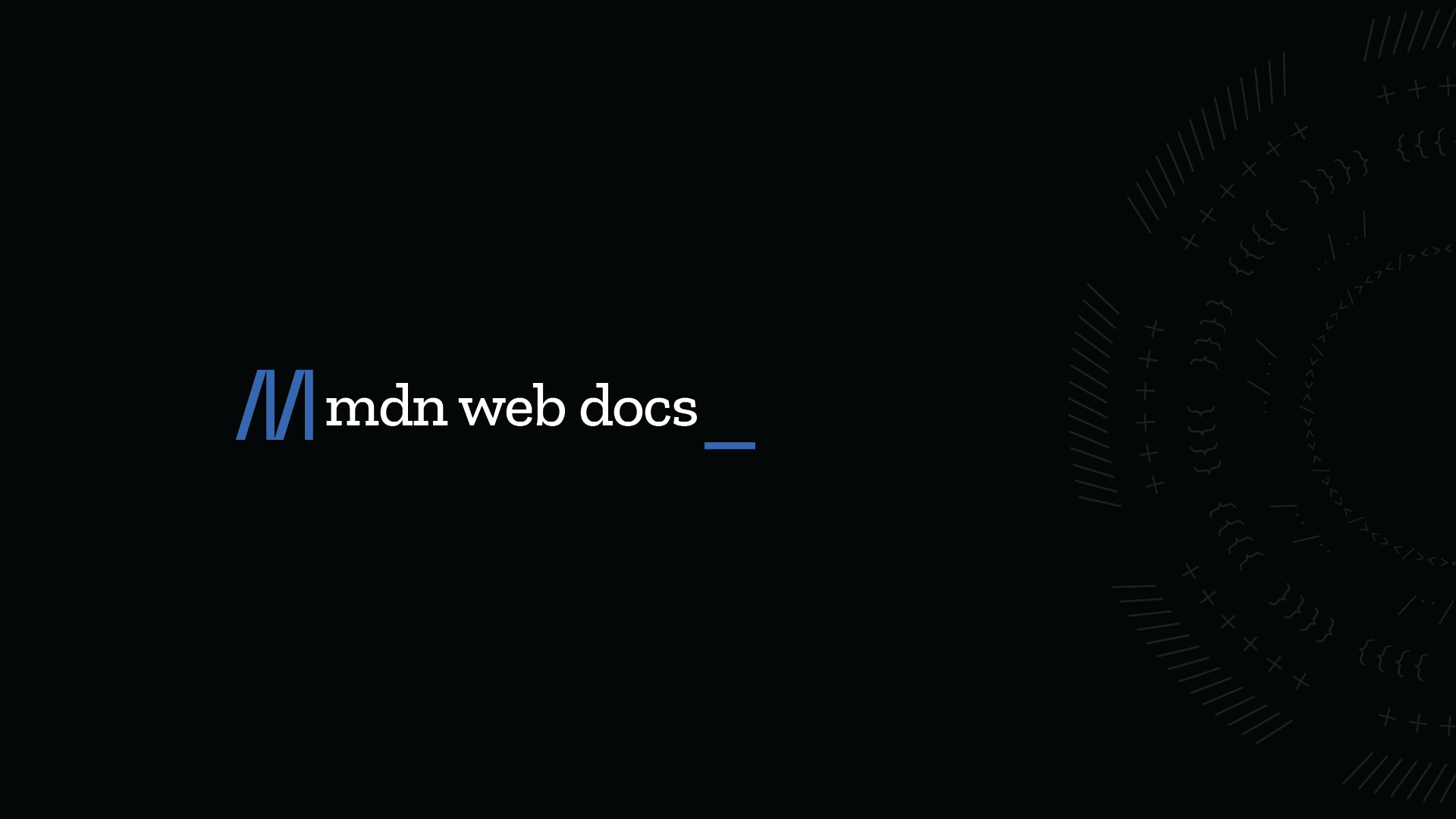Access POST Form Data in Express.js
Learn how to easily access and process data submitted through POST forms in your Express.js applications with this comprehensive guide.
Learn how to easily access and process data submitted through POST forms in your Express.js applications with this comprehensive guide.
This guide provides a step-by-step explanation of how to access and handle data submitted through POST forms in Express.js applications. It covers setting up an Express app, using body-parsing middleware, creating POST routes, accessing form fields, and processing submitted data. The guide also emphasizes the importance of data validation, error handling, and security considerations when working with user input.
Here's how to access data submitted through POST forms in your Express.js application:
1. Set Up Your Express App:
npm install expressapp.js) and set up a basic Express application:const express = require('express');
const app = express();
// ... your routes and middleware will go here
app.listen(3000, () => console.log('Server listening on port 3000'));2. Include Body Parsing Middleware:
body-parser middleware to parse incoming request bodies. Install it using npm:npm install body-parserapp.js to use the middleware:const bodyParser = require('body-parser');
// Parse URL-encoded bodies (as sent by HTML forms)
app.use(bodyParser.urlencoded({ extended: true }));
// Parse JSON bodies (as sent by API clients)
app.use(bodyParser.json());3. Create a POST Route:
app.post('/submit-form', (req, res) => {
// ... process form data here
});4. Access Form Data:
req.body object. Each form field will be available as a property of this object. For example, if your form has fields named "username" and "email":app.post('/submit-form', (req, res) => {
const username = req.body.username;
const email = req.body.email;
// ... do something with the data, like saving it to a database
});5. Handle Form Submission:
Example:
app.post('/submit-form', (req, res) => {
const username = req.body.username;
const email = req.body.email;
// Validate the data (example using simple checks)
if (!username || !email) {
return res.status(400).send('Please provide both username and email.');
}
// Save the data to a database (example using console log for simplicity)
console.log('User submitted:', username, email);
// Send a success response
res.send('Thank you for submitting the form!');
});Additional Considerations:
multer to handle them.By following these steps, you can effectively access and process POST form data in your Express.js applications, enabling you to build dynamic and interactive web experiences.
This Express.js code demonstrates handling form submissions using the POST method. It uses the body-parser middleware to parse incoming form data and retrieves submitted username and email values from the request body. Basic validation ensures both fields are provided, and then it simulates saving the data. Finally, a success message is sent as a response. To run the code, install required dependencies, start the server, and create an HTML form that submits data to the specified route.
This code demonstrates the steps outlined in the article:
const express = require('express');
const bodyParser = require('body-parser');
const app = express();
// Use body-parser middleware for parsing form data
app.use(bodyParser.urlencoded({ extended: true }));
// POST route handler for form submission
app.post('/submit-form', (req, res) => {
const username = req.body.username;
const email = req.body.email;
// Basic data validation
if (!username || !email) {
return res.status(400).send('Please provide both username and email.');
}
// Simulate saving data (replace with actual database logic)
console.log('User submitted:', username, email);
// Send success response
res.send('Thank you for submitting the form!');
});
app.listen(3000, () => console.log('Server listening on port 3000'));Explanation:
express and body-parser modules.bodyParser.urlencoded is used to parse incoming form data./submit-form route handles POST requests.req.body object provides access to form fields (username and email).To run this example:
app.js).npm install express body-parser to install the required dependencies.node app.js to start the server.http://localhost:3000/ (or the appropriate URL if you're running the server on a different port)./submit-form route using the POST method.Remember: This is a basic example. You'll need to adapt it to your specific needs, including implementing robust validation, error handling, and data storage mechanisms.
Beyond the Basics:
body-parser options like limit to control maximum request body size and prevent potential denial-of-service attacks.express-validator for more robust and flexible data validation.multer middleware to manage file storage and access uploaded files through req.files.async/await or promises to maintain non-blocking code execution.Security Best Practices:
DOMPurify or built-in methods like escapeHTML.Error Handling and User Feedback:
Advanced Techniques:
Testing and Debugging:
Remember: This is not an exhaustive list, and the specific techniques you use will depend on your application's requirements and complexity.
Here's a breakdown of the key steps:
body-parser middleware to handle incoming form data./submit-form) to handle POST requests.req.body within the route to access individual form fields (e.g., req.body.username).Additional Points:
multer for handling file uploads.By following these steps, you can effectively work with form data in your Express.js applications.
In conclusion, mastering the handling of POST form data in Express.js is crucial for building dynamic and interactive web applications. By understanding the steps involved – from setting up your Express app and incorporating body-parsing middleware to creating POST routes, accessing form fields, and processing submitted data – you gain the ability to effectively manage user input and create engaging web experiences. Remember to prioritize security by validating and sanitizing user input, implement robust error handling, and consider advanced techniques like file uploads and asynchronous operations to enhance your application's functionality. With these tools and best practices at your disposal, you'll be well-equipped to handle POST form data efficiently and securely in your Express.js projects.
 How to access POST form fields in Express JS? - GeeksforGeeks | A Computer Science portal for geeks. It contains well written, well thought and well explained computer science and programming articles, quizzes and practice/competitive programming/company interview Questions.
How to access POST form fields in Express JS? - GeeksforGeeks | A Computer Science portal for geeks. It contains well written, well thought and well explained computer science and programming articles, quizzes and practice/competitive programming/company interview Questions. Express Tutorial Part 6: Working with forms - Learn web development | Express, node, and third-party packages on npm provide everything you need to add forms to your website. In this article, you've learned how to create forms using Pug, validate and sanitize input using express-validator, and add, delete, and modify records in the database.
Express Tutorial Part 6: Working with forms - Learn web development | Express, node, and third-party packages on npm provide everything you need to add forms to your website. In this article, you've learned how to create forms using Pug, validate and sanitize input using express-validator, and add, delete, and modify records in the database. Handling any POST data in Express | use(express.urlencoded()); /** Show page with a form */ app.get('/', (req, res, next) ...
Handling any POST data in Express | use(express.urlencoded()); /** Show page with a form */ app.get('/', (req, res, next) ... How to Access POST Form Fields in Express | Better Stack Community | Better Stack lets you see inside any stack, debug any issue, and resolve any incident.
How to Access POST Form Fields in Express | Better Stack Community | Better Stack lets you see inside any stack, debug any issue, and resolve any incident. How to Send Data From a Form and Receive It with Express.js | by ... | I am practicing with forms and Express.js how to send data and how to catch it and this will be a great way to create a web page who will…
How to Send Data From a Form and Receive It with Express.js | by ... | I am practicing with forms and Express.js how to send data and how to catch it and this will be a great way to create a web page who will… ExpressJS - Form data | ExpressJS - Form data - Forms are an integral part of the web. Almost every website we visit offers us forms that submit or fetch some information for us. To get started with forms, we will first install the body-parser(for parsing JSON and url-encoded data) and multer(for parsing multipart/form data) middleware.
ExpressJS - Form data | ExpressJS - Form data - Forms are an integral part of the web. Almost every website we visit offers us forms that submit or fetch some information for us. To get started with forms, we will first install the body-parser(for parsing JSON and url-encoded data) and multer(for parsing multipart/form data) middleware. Using Netlify functions, fetch POST request won't send from within ... | For context, I have a Serverless function that uses Express to receive data from a Webhook Event. The first callback receives that data, the second callback should obtain an access token and post our data to an external server using fetch Post requests. The code works well locally testing with Postman, but when I deploy to Netlify, run a Postman test and check the Netlify logs, the logs show the data is received, but then just stop before the fetch post request i.e. they don’t show any error r...
Using Netlify functions, fetch POST request won't send from within ... | For context, I have a Serverless function that uses Express to receive data from a Webhook Event. The first callback receives that data, the second callback should obtain an access token and post our data to an external server using fetch Post requests. The code works well locally testing with Postman, but when I deploy to Netlify, run a Postman test and check the Netlify logs, the logs show the data is received, but then just stop before the fetch post request i.e. they don’t show any error r...